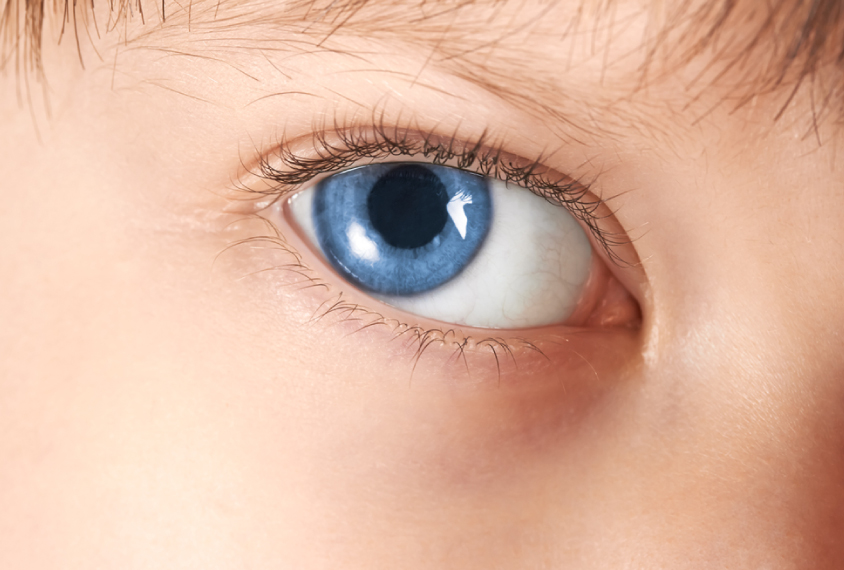
Delayed pupil response to light may be early sign of autism
The pupils of preschoolers with autism are slow to constrict in response to light, a phenomenon that may serve as an early marker of autism risk.
Editor’s Note
This article was originally published 12 May 2016, based on preliminary data presented at the 2016 International Meeting for Autism Research in Baltimore. We have updated the article following publication of one of the studies 11 February 2017 in Autism Research1. Updates appear below in brackets.
The pupils of preschool-age children with autism are slow to constrict in response to light, according to results from two unpublished studies presented today at the 2016 International Meeting for Autism Research in Baltimore. The findings suggest that the pupillary reflex could serve as an early indicator of autism risk.
Researchers have seen a similarly lethargic response in children with autism older than 6 years. Both of the new studies extend this observation to younger affected children.
In one study, researchers asked [52] boys with autism and [52] typically developing boys, all between 2 and 6 years old, to watch a cartoon as an eye tracker measured the size and speed of their pupil reflexes. The cartoon was tinted red to minimize its effects on the pupil. Periodically, a bulb positioned above the screen flashed green light into the participants’ eyes.
The average pupil reflex in the autism group lagged about 10 milliseconds behind that of the control group, the researchers found. The two groups did not show any differences in overall pupil size at the start of the experiment or in the amount or speed of constriction in response to the light.
Age differences:
But important differences emerged with a child’s age. In typically developing children, pupil size and constriction speed increase with age, and the time it takes for the pupil to start constricting decreases with age. Children with autism, however, do not show these age-related patterns.
The delayed pupil reflex could be helpful for identifying children with autism at a young age, says Randima Dinalankara, a former graduate student in Gang Yao’s lab at the University of Missouri, Columbia who presented the findings.
[The altered pupil reflex may go along with impairments in other types of involuntary bodily functions. The participants’ parents completed a questionnaire about their child’s difficulties with physiological functions that, like the pupil reflex, the autonomic nervous system controls. These include sleep, heart rate, breathing, digestion and urination, as well as saliva and sweat production.
Children with autism in the study have significantly more trouble with these functions than typical children do. One of these functions appears to correlate with pupil size and degree of constriction: Typical children who sweat a lot have larger pupils and constrict their pupils less than those who sweat a typical amount. This correlation was not seen in children with autism, however, suggesting that children with autism may have altered regulation of multiple bodily functions.]
In the second study, 45 children with autism and 54 controls, all between 3 and 10 years old, watched a computer screen on which a large circle alternated from black to white as an eye tracker monitored their pupils.
The pupils of the children with autism constricted an average of 12 milliseconds later than those of controls when the circle changed to white. The researchers found no differences between the groups in the extent of pupil constriction or in the amount of time it takes for the pupil to fully constrict. Unlike the previous study, however, this study found no age-related differences in pupil size or constriction speed in children in either group.
This discrepancy in the findings might result from differences in the ages of the participants, or in differences in the light sources, says Veronica Kang, research study assistant in Wendy Stone’s lab at the University of Washington, Seattle who presented the work.
For more reports from the 2016 International Meeting for Autism Research, please click here.
References:
- Dinalankara D.M. et al. Autism Res. Epub ahead of print (2017) PubMed
Recommended reading

Too much or too little brain synchrony may underlie autism subtypes

Developmental delay patterns differ with diagnosis; and more

Split gene therapy delivers promise in mice modeling Dravet syndrome
Explore more from The Transmitter

During decision-making, brain shows multiple distinct subtypes of activity

Basic pain research ‘is not working’: Q&A with Steven Prescott and Stéphanie Ratté
